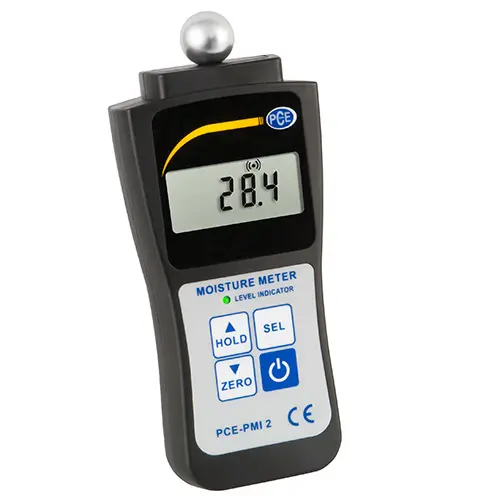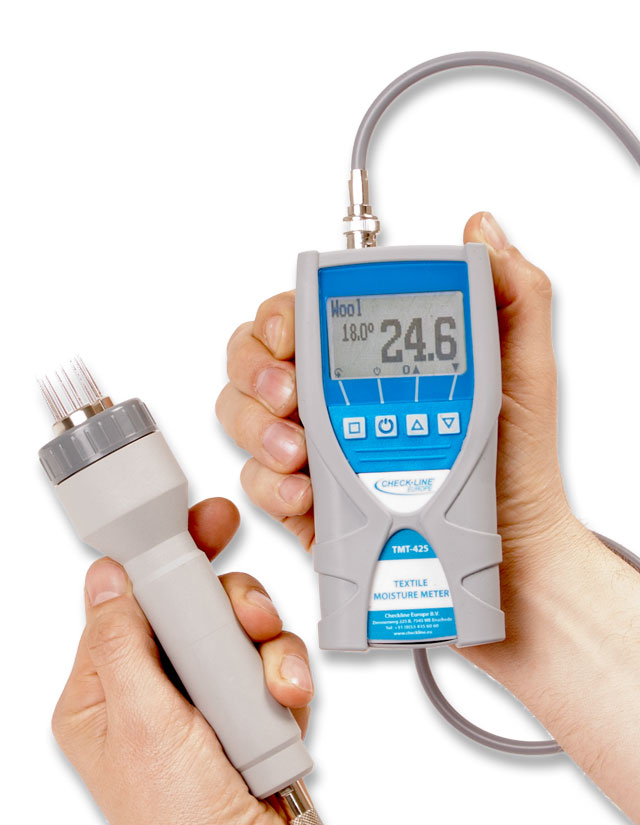Comprehending the Different Kinds Of Moisture Meters and Their Applications
Comprehending the Different Kinds Of Moisture Meters and Their Applications
Blog Article
Delve Into the World of Moisture Meters: Everything You Need to Know
In the realm of moisture meters exists a globe of accuracy and practicality that often goes undetected. Understanding just how moisture meters operate, the different kinds offered, and their varied usages can shed light on their relevance in making certain high quality and efficiency.
Just How Wetness Meters Work
Wetness meters operate by gauging the electrical conductivity or capacitance of products to figure out the moisture web content present - Moisture Meter. These meters are invaluable devices across different industries, consisting of farming, woodworking, and building. By using various methods such as pinless or pin-type technology, wetness meters provide precise analyses that help experts make educated decisions
Pin-type wetness meters function by inserting the sharp pins into the product being examined. The electrical conductivity between the pins is after that gauged, with higher dampness levels leading to increased conductivity. On the various other hand, pinless dampness meters utilize electro-magnetic signals to check a bigger area without causing any type of damages to the product's surface area. These meters are perfect for swiftly analyzing moisture levels in large areas or completed products.
No matter the approach made use of, dampness meters play an essential role in stopping problems such as mold growth, structural damage, or product defects triggered by excess moisture. Understanding just how these meters job is crucial for ensuring the top quality and honesty of products in different applications.
Sorts Of Moisture Meters
Provided the vital role dampness meters play in numerous industries, it is vital to recognize the various types readily available to experts for accurately analyzing dampness levels. There are largely two main sorts of moisture meters: pinless and pin-type wetness meters.
Pin-type moisture meters use two pins that are put into the product being checked to gauge the electrical resistance in between them. This method is generally utilized for timber, drywall, and other structure materials. Pin-type meters supply precise analyses at specific midsts, making them ideal for determining moisture slopes.
On the various other hand, pinless wetness meters make use of electromagnetic sensing unit plates to check a larger location of the product without triggering any kind of damage. This type appropriates for rapidly scanning huge locations and is typically made use of for flooring, wall surfaces, and ceilings. Pinless meters are hassle-free for taking readings on finished surface areas without leaving any kind of visible marks.
Both kinds of dampness meters have their advantages and are selected based upon the details requirements of the task handy. Understanding the differences between these kinds is critical for professionals to make precise dampness analyses.
Applications Across Industries
With diverse performances, dampness meters discover widespread application throughout different industries, aiding experts in making sure optimal conditions for structures and products. In the farming market, wetness meters are important for determining the wetness material in grains, seeds, and hay, ensuring quality assurance and protecting against mold and mildew development. Building and construction specialists depend on moisture meters to assess the moisture levels in structure products like concrete, drywall, and timber, which is essential for preserving structural integrity and preventing issues like rot or mold and mildew. The floor covering market uses wetness meters to measure the moisture content in subfloors before installing numerous flooring coverings, avoiding costly problems as a result of excess wetness. Furthermore, in the food industry, dampness meters are made use of to keep an eye on and manage moisture levels in items such as grains, nuts, and dried out fruits to maintain quality and high quality. Additionally, dampness meters play an important role in the reconstruction and damage control sector by assisting professionals recognize and deal with water damage in structures quickly. Across these varied industries, dampness meters are vital tools for making certain the top quality, security, and long life of different products and products.
Tips for Using Wetness Meters
When measuring the wetness material in different products,Utilize the dampness meter's calibration settings to make certain precise analyses. Calibration is essential for the appropriate performance of a wetness meter. Prior to each usage, it is suggested to examine and readjust the calibration setups according to the details product being examined. In addition, make certain the meter is readied to the proper dampness array for the product you are determining to acquire the most accurate results.

When making use of a pin-type dampness meter, put the pins to the ideal deepness advised for the product being examined. This makes certain look at these guys that the dampness analyses are drawn from the right depth within the material, offering a more accurate depiction of its dampness material. For pinless wetness meters, keep in mind to maintain proper call with the product's surface to get dependable readings.

Routinely check and change the batteries in your wetness meter to avoid imprecise readings due to reduced power. Store the meter in a dry and risk-free place when not being used to extend its life-span and preserve its accuracy. By following these pointers, you can optimize the performance of your wetness meter and acquire exact dampness material dimensions across different products.

Maintenance and Calibration
To make certain the accuracy of wetness web content measurements, routine upkeep and calibration of the dampness meter are important actions in its correct performance. Calibration adjusts the wetness meter to make sure that it provides consistent and reputable results.
Calibration should be performed occasionally, specifically if the dampness meter is made use of often or in important applications where exact dimensions are needed. By maintaining and calibrating the dampness meter frequently, users can trust the precision of the wetness material measurements gotten.
Verdict
In final thought, moisture meters play an essential duty in numerous markets by accurately gauging the dampness material of materials. Recognizing exactly how these devices function, the different types readily available, and appropriate maintenance and calibration are crucial for acquiring dependable outcomes. Whether in production, agriculture, or building, making use of wetness meters helps make sure quality assurance and performance in processes.
Building professionals depend on moisture meters to examine the dampness levels in structure materials like drywall, concrete, and wood, which is vital for maintaining structural honesty and preventing problems like rot or mold and mildew. The flooring market makes use of moisture meters to determine the dampness content in subfloors before mounting numerous floor treatments, protecting against costly damages due to excess dampness.Make use of the wetness meter's calibration setups to ensure precise analyses when gauging the moisture content in different products. By adhering to these tips, you can make best use of the performance of your try this site moisture meter and acquire exact dampness web content measurements across different materials.
In final thought, dampness meters play a critical role in various industries his explanation by accurately gauging the wetness material of products.
Report this page